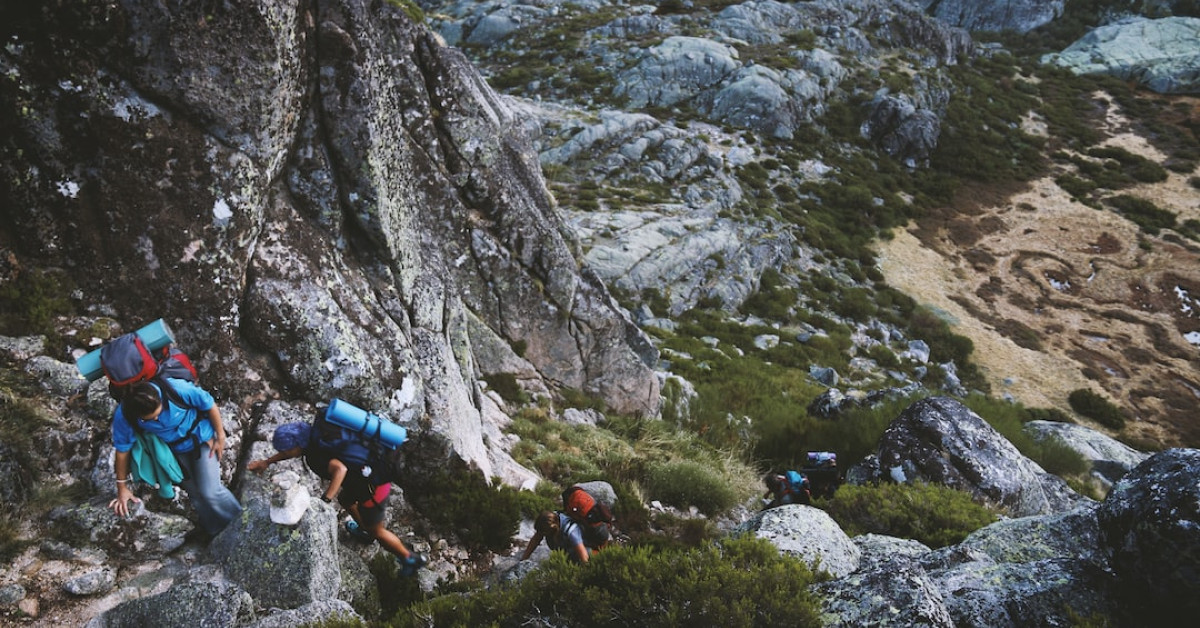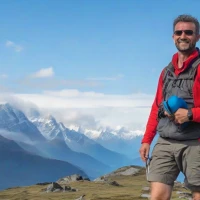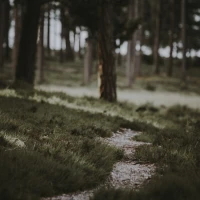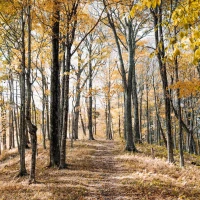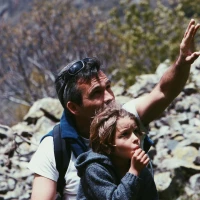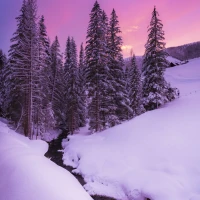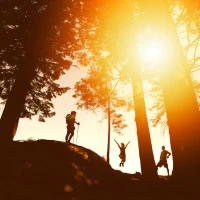Embarking on a trekking adventure is an exhilarating experience that offers the perfect blend of physical challenge and mental rejuvenation. Every trail whisperer knows that the difference between a good hike and a great one often lies in the gear you carry. With the right equipment, you can conquer any path, from the misty mountain ascents to the arid desert treks. Welcome to ‘Hiking BJ’s Top Gear Picks for Every Trail Adventurer,’ where we delve deep into the must-have essentials that will elevate your trekking journey. For every outdoor enthusiast gearing up to tread new vistas or seasoned hikers pushing new heights, this definitive guide is tailored to ensure you’re well-equipped for the wonders that await.
Trekking Essentials: The Foundation of Every Adventure
Trekking, at its core, is an escape into the wild—where preparedness and self-reliance are paramount. The wilderness beckons with unpredictability, making it essential to have a trusted set of gear that caters to various terrains and weather conditions. Here’s where Hiking BJ steps in, sifting through the plethora of options to bring you a curated selection of trekking essentials.
The Backbone: Choosing the Right Backpack
The cornerstone of trekking gear is undoubtedly your backpack. Comfort, capacity, and durability are the trifecta of features you can’t compromise on. Look for backpacks with:
- Ergonomic design that contours to your body
- Ample space to house all your gear but not so large that it becomes unwieldy
- Strong, water-resistant materials that withstand the elements
- Multiple compartments for better organization
- Adjustable straps for a snug fit and even weight distribution
Step Wisely: Footwear to Take You Further
On the trail, your feet are your most valuable assets. Investing in the right pair of osrs temple trekking boots or shoes is tantamount to ensuring a successful hike. Always opt for quality and fit over style. Key features include:
- Robust tread patterns for superior grip
- High ankle support to avoid sprains
- Water-resistant materials to keep your feet dry
- Breathable fabrics to prevent blisters
- Cushioning that complements the foot’s natural movement
Dress for Success: Apparel that Works with You
Your trekking attire should be comfortable, breathable, and versatile enough to handle changes in the weather. Layering is essential, as it provides flexibility to adjust to temperature fluctuations. Your wardrobe may include:
- Moisture-wicking base layers
- Insulating mid-layers for colder climates
- Windproof and waterproof outer shells
- Quick-dry pants and shorts with reinforced stitching
- Sun-protective hats and UV-blocking sunglasses
Elite Gear for the Tech-Savvy Trekker
In today’s digital age, even the most remote trails aren’t devoid of technology. Innovative gadgets can enhance your trekking experience by offering safety, navigation, and even entertainment.
Discovering Directions: GPS and Navigation Tools
Avoid getting lost and stay on the right track with a reliable GPS device or mapping app. A durable and precise GPS watch may come with features like:
- Accurate location tracking
- Altimeter, barometer, and compass for comprehensive guidance
- Long-lasting battery life
- Easy-to-read display
Emergency Readiness: Safety Equipment
Safety should be at the forefront of every adventurer’s mind. Having a well-stocked first aid kit and emergency gear is non-negotiable. Your safety kit should include:
- Bandages and antiseptics for cuts and scrapes
- Blister treatments
- Emergency blanket or bivy sack
- Multi-tool with a knife
- Whistle and signal mirror
Staying Powered Up: Portable Chargers and Solar Panels
Keep your devices charged and ready to use with portable power solutions. Solar chargers and power banks are great for longer treks. Ensure they are:
- Compact and lightweight
- Capable of charging multiple devices
- Durable and ideally weatherproof
Nutrition and Hydration on the Trail
No trek is sustainable without proper nutrition and hydration. The right food and water supply is crucial for maintaining energy levels and staying hydrated throughout your adventure.
Keeping Hydrated: Water Filtration and Containers
Having access to clean water is critical. Use water bottles with built-in filters or carry a portable filtration system. Features to consider:
- Effectiveness against bacteria and parasites
- Ease of use and quick access
- Durability and leak-proof designs
Energy on the Go: Nutritious Snacks and Meals
Select high-energy foods that are nutrient-dense and easy to prepare. Items like nuts, seeds, dried fruits, and jerky are excellent choices. Additionally, consider:
- Meal kits that are simple to make with hot water
- Energy bars and gels for a quick calorie boost
- Reusable containers to minimize waste
Camping Comforts: Gear for Overnight Treks
If your trek extends beyond a day, camping gear becomes a necessity. Here’s where quality and convenience intersect to offer you a pleasant night under the stars.
Shelter Solutions: Tents and Hammocks
Your choice of shelter is easily the most critical decision for comfort and protection. Look for lightweight tents or hammocks with stress-free setup and these features:
- Ample space for the number of occupants
- Robust weatherproofing
- Good ventilation to reduce condensation
- Quality zippers and bug nets
Rest Assured: Sleeping Bags and Pads
Recovering from a day’s trek requires a good night’s sleep, something only a quality sleeping system can provide. Your sleeping bag and pad should offer:
- Appropriate temperature rating for the environment
- Comfort and support for your body type
- Durability and water resistance
- Compact size when packed
Navigating the Terrain: Hiking Poles and Accessories
Trekking poles are not just for the elderly; they’re a strategic accessory for any hiker looking to reduce joint strain and improve balance on uneven terrain. Go for poles that are:
- Adjustable to your height
- Made with strong, lightweight materials like carbon fiber or aluminum
- Equipped with comfortable grips and wrist straps
Enhancements: Gadgets and Accessories
Accessorize your trek with items that make each step easier and more enjoyable. From headlamps for early dawn starts to GPS tracking devices for the safety-conscious, you can find gadgets that serve multiple purposes, such as:
- Water-resistant and durable designs
- Lightweight yet powerful performance
- Usability in various environments and weather conditions
Go Pro: Advanced Tools for Serious Trekkers
For those pushing the boundaries, there are advanced tools that cater to specialized trekking needs. From navigation software to climate-appropriate clothing, the pro trekker knows the value of gear that performs under pressure.
Acclimate Smartly: High-Altitude Gear
When elevation increases, the importance of gear becomes paramount. Breathe easier with oxygen systems, and protect your extremities with insulated gloves and gaiters. Look for gear that:
- Functions reliably in cold, thin air
- Provides ample insulation and protection
- Features materials suited to high-abrasion areas
Document the Journey: Photography and Recording
Capture memories and share your experiences with lightweight cameras, drones, or action cams designed for rugged outdoor use. Prioritize:
- High-quality images and video
- Durability and weather resistance
- Long battery life and easy storage options
Leave No Trace: Environmentally Friendly Trekking Practices
A responsible trekker respects nature and practices sustainability. Leave no trace by using biodegradable products and reducing single-use plastics. Also, consider:
- Packing out what you pack in, including all trash
- Using eco-friendly soaps and cleaning supplies
- Selecting gear from brands that prioritize environmental conservancy
Conclusion: The Trek Ahead
Trekking is not just a pastime; it’s a passion that can take you to the most breathtaking corners of the planet. With ‘Hiking BJ’s Top Gear Picks for Every Trail Adventurer,’ you’re now equipped with the knowledge to select the best gear that harmonizes with your ambition and love for the trails. Remember, the right gear doesn’t just support your journey; it enhances it. So gear up, step out, and forge new paths with confidence.
May your trails be wild and your experiences grand. Happy trekking!
